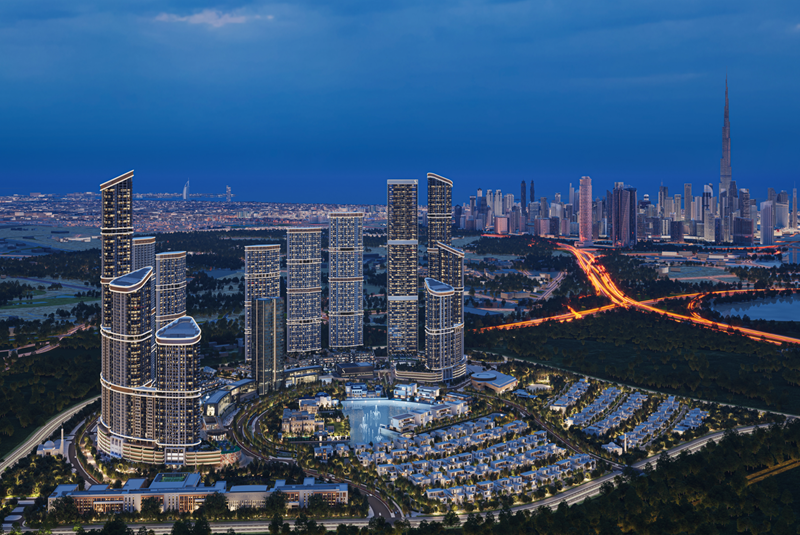In a hyper-competitive real estate market where timelines are tight and expectations even tighter, Sobha Realty is proving that true innovation doesn’t just lie in design — it lies in how you build. One of the few developers in the region and globally that practices backward integration at scale, Sobha Realty is rewriting the rules of construction and development from the inside out.
Backward integration isn’t just a strategy at Sobha — it’s a philosophy. By owning every aspect of the value chain, from architecture and engineering to manufacturing and construction, Sobha has achieved something rare: consistent, measurable efficiency without sacrificing quality.
This integration model has enabled the company to deliver high-end projects ahead of schedule, control costs amid fluctuating market prices, and elevate customer satisfaction — all while expanding aggressively into key markets.

What Is Backward Integration?
For Sobha Realty, backward integration means going far beyond the traditional developer role. Rather than outsourcing design, materials, or even labor, the company has invested in building the entire ecosystem in-house.
This includes:

- Full-scale architectural and design studios
- Precast concrete factories
- Modular bathroom pod and kitchen unit manufacturing
- Aluminium and glass façade production
- Internal carpentry and joinery workshops
- Dedicated quality assurance and control departments
This end-to-end ownership allows Sobha to control not only the timeline of each project, but the smallest detail of its execution — right down to the screws in the cabinetry.
A Model Built for Speed and Precision
With this infrastructure in place, Sobha is able to streamline project execution in ways few competitors can. Where delays in procurement, labor, or delivery derail many developers, Sobha’s controlled ecosystem prevents such friction.
Timelines become shorter. Quality becomes consistent. And budgets stay on track.
This has allowed Sobha Realty to deliver several landmark projects months ahead of schedule, impressing investors, buyers, and regulators alike. It’s not just a claim — it’s a repeated outcome.
Manufacturing Muscle
Sobha’s backward integration strategy is made possible through its massive in-house manufacturing capabilities. These aren’t small units serving a niche purpose — they’re expansive factories that serve as the backbone of every real estate project the company undertakes.
Whether it’s modular bathrooms, aluminium facades, or precision-engineered interiors, these components are produced with an assembly-line mentality, driving both speed and quality. The benefit of standardised excellence across hundreds of units cannot be overstated — every module is tested, refined, and replicated to meet tight tolerances and high standards.
This manufacturing power also reduces dependence on volatile supply chains. In a world where shipping disruptions or raw material shortages can derail an entire schedule, Sobha’s independence offers confidence and stability.
Cost Control Through Integration
One of the most underappreciated aspects of backward integration is cost control. By cutting out third-party vendors and middlemen, Sobha is able to avoid markups that inflate construction costs. The savings can then be reinvested into better materials, smarter technologies, and faster delivery.
Additionally, the company is able to negotiate material procurement directly, leveraging bulk buying and stable supplier relationships to keep input costs predictable — a massive competitive advantage in a fluctuating market.
All of this ultimately translates into better pricing for customers and stronger margins for the business.

Precision as a Brand Promise
What sets Sobha apart is not just speed or savings — it’s precision. The company’s projects are known for the level of detail and consistency rarely found in mass-scale developments. This is a direct result of backward integration, where each component is produced under one vision, one quality standard, and one chain of accountability.
From the fitting of a door handle to the alignment of tiles across hundreds of apartments, Sobha’s model ensures the kind of consistency that creates long-term customer trust.
This detail-first mindset is what’s turning buyers into brand advocates. Sobha isn’t just building homes — it’s building a reputation for delivering what it promises, and often more.
Real Estate with a Human Touch
Despite the scale and complexity of its operations, Sobha Realty maintains a human-centric approach to real estate. It understands that behind every square meter built is a family waiting to move in, an investor expecting returns, and a community looking to thrive.
Backward integration supports this philosophy by giving Sobha full control over how spaces are created and how experiences are delivered. It means that timelines are more predictable, quality is more consistent, and customers are treated to a seamless handover experience.
Every new project is seen as an opportunity to do things better, smarter, and faster — without compromising on heart.
Sobha’s Expansion — Backed by Its Own Ecosystem
The strength of backward integration has enabled Sobha to scale without losing its identity. The company’s rapidly growing footprint in Dubai, as well as ventures in other global markets, are all built on the same proven model.
As Sobha expands, it replicates its backward integration ecosystem — setting up factories, recruiting skilled in-house teams, and embedding its processes in each location. This removes the guesswork from scaling and ensures that Sobha’s reputation travels with it.
In markets where delivery issues and quality inconsistencies are common, Sobha’s model stands out as a refreshing alternative.
From Building Units to Building Trust
One of the intangible — yet critical — outcomes of backward integration is trust. In an industry often plagued by missed deadlines and questionable quality, Sobha has emerged as a reliable partner to investors and homeowners alike.
It’s a brand that not only speaks of quality but delivers it. And that delivery is made possible by owning every link in the construction and development chain.
Each time a project is completed early or exceeds expectations, the trust compounds. That’s a business model that scales far beyond buildings — it creates loyalty.
Driving Sustainability From Within
Backward integration has also allowed Sobha to implement its sustainability goals at the source. From choosing energy-efficient materials to installing green technologies during manufacturing, the company doesn’t just tick boxes — it rethinks processes.
Sustainability is embedded in production, construction, and operations. This ensures that environmental goals are met consistently and transparently, rather than relying on third parties to adhere to abstract standards.
This self-driven ESG (Environmental, Social and Governance) approach allows Sobha to stay ahead of regulatory requirements and buyer expectations alike.
The Road Ahead: Integration Meets Innovation

Sobha Realty isn’t resting on its laurels. The company is actively investing in new technologies that complement its backward integration model. This includes AI-driven project management, digital twin models for construction oversight, and automation in factories.
The goal is not just to scale, but to scale intelligently. Integration is the foundation — innovation is the multiplier.
As new markets emerge and customer expectations evolve, Sobha is positioned not just to meet the demand but to shape it. With its holistic control of quality, cost, and time, the company is creating a new standard for what real estate development can and should be.
Conclusion: More Than a Business Model — A Competitive Edge
In a world where timelines slip and quality is compromised, Sobha Realty’s backward integration model offers a beacon of consistency and confidence. It’s more than a business model — it’s a long-term competitive edge that powers growth, drives excellence, and builds trust.
By choosing to own its process from the ground up, Sobha has chosen a harder path — but one that delivers lasting results. From manufacturing bathroom pods to delivering entire communities, the company’s fingerprints are on every detail.
That’s not just integration. That’s transformation.
Do follow UAE Stories on Instagram
Read More: Unlock Dubai’s Hidden Gems: Top Property Hotspots for 2025!














